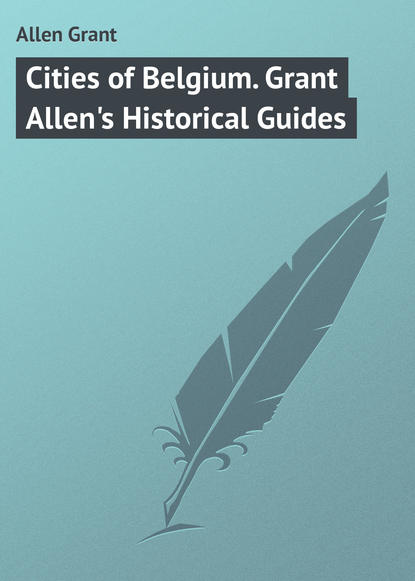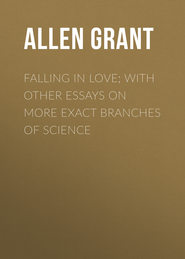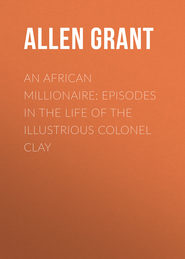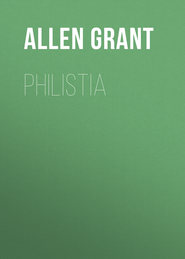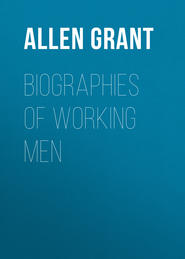По всем вопросам обращайтесь на: info@litportal.ru
(©) 2003-2024.
✖
Cities of Belgium. Grant Allen's Historical Guides
Настройки чтения
Размер шрифта
Высота строк
Поля
242. Quentin Matsys: Companion *Head of Our Lady, as Queen of Heaven. Full of charm and simplicity.
Between these, 4, *Antonello da Messina (an Italian profoundly influenced by the School of Van Eyck, and the first to introduce the Flemish improvements in oil-painting into Italy). Crucifixion, with St. John and Our Lady. This work should be carefully studied, as a connecting link between the art of Flanders and Italy. It is painted with the greatest precision and care, and bears marks everywhere of its double origin – Flemish minuteness, Italian nobility.
254. Memling: **admirable cold-toned portrait of a member of the De Croy family. The hands, face, and robe, are all exquisitely painted.
Centre of the wall, 412, good early copy of Jan van Eyck’s altar-piece for Canon George van der Paelen, in the Academy at Bruges. If you have not been there, see page 59 (#Page_59) for particulars. Better preserved than the original: perhaps a replica by the master himself.
519. Crucifixion, with Our Lady and St. John, on a gold background. Interesting only as a specimen of the very wooden Dutch painting of the 14th century. Contrast it with the Van Eyck beneath it, if you wish to see the strides which that great painter took in his art.
397. Good hard *portrait of Philippe le Bon of Burgundy, an uninteresting, narrow-souled personage, wearing the collar of the Golden Fleece, by Roger van der Weyden.
43. Cranach the Elder: Charity. A study of the nude, somewhat more graceful than is the wont of this painter.
264. Mostaert (Jan, the Dutchman), tolerable hard portrait: same person reappears in 262.
179. Gossaert: *a beautiful panel representing the Return from Calvary. The Mater Dolorosa is supported by St. John. On the L., the Magdalen with her pot of ointment; R., the other Maries. Very touching. Notice the Flemish love for these scenes of the Passion and Entombment.
198. Hans Holbein the Younger: **admirable portrait of Erasmus. It lives. Full of vivacity and scholarly keenness, with the quick face of a bright intelligence, and the expressive hands of a thinker. The fur is masterly.
180. Gossaert: group of figures somewhat strangely known as “The Just Judges.” Probably a single surviving panel from an extensive work of the same character as the Adoration of the Lamb at Ghent.
263. Jan Mostaert: *very fine portrait of a man in a large black hat and yellow doublet. Pendant to 264.
558. Holy Family. Dutch School. Early 16th century.
202. Lucas van Leyden: *portraits. Characteristic, and well thrown out against the background.
566. School of Quentin Matsys: a genre piece; an unpleasant representation of a young girl attempting to cut the purse strings of an old man. Probably a companion picture to one now in the possession of the Countess of Pourtalés, Paris.
Above these, 168, Triptych by Fyol, German School. Centre, the Adoration of the Magi. The Old King has removed his crown, as usual, and presented his gift. He is evidently a portrait: he wears a collar of the Golden Fleece, and is probably Philippe le Bon. Behind him, the Middle-aged King, kneeling; then the Young King, a Moor, with his offering. (The story of the Three Kings – Gaspar, Melchior, Balthasar – was largely evolved in the Cologne district, where their relics formed the main object of pious pilgrimage.) To the R., an undignified Joseph, with his staff, and the peculiar robe with which you are now, I hope, familiar. In the background, the family of the donor, looking in through a window. The wings have, I think, been misplaced. L., The Circumcision; R., Nativity: notice the ox and ass, and the costume of Joseph.
325. Schoreel: Crucifixion, with Our Lady, St. John, the Magdalen, and angels catching the Holy Blood. (A frequent episode.)
Above it, 570, School of Gossaert: Our Lady.
262. Jan Mostaert: The Prophecies of Our Lady. Above, she is represented as Queen of Heaven, in an oval glory of angels, recalling the Italian mandorla. Below, those who have prophesied of her: in the centre, Isaiah, with scroll, “Behold, a Virgin shall conceive,” etc.: R. and L., Micah and Zechariah. Further R. and L., two Sibyls. The one to the R. is the same person as 264.
567. School of Quentin Matsys: Favourite subject of the Miser.
25. More monstrosities by Bosch.
Beyond the door,
534. Unknown: Flemish School: Assumption of Our Lady. Above, the Trinity waiting to crown her.
123. Dunwege: German School. The Family of St. Anne, resembling in subject the Quentin Matsys at Brussels. Centre, St. Anne enthroned. Below her, Our Lady and the Divine Child. (Often Our Lady sits on St. Anne’s lap.) L., Joachim offers St. Anne and Our Lady cherries. (See Legends of the Madonna.) R., St. Joseph, with his staff and robe. On either side, the Maries, with their children, here legibly named, and their husbands. (From a church at Calcar.)
Above this, 523. Triptych: Madonna and Child, with donors and patron saints (Sebastian and Mary Magdalen). Note their symbols. On either side,
Van der Meire: 388: Mater Dolorosa; her breast pierced with a sword: and on the other side of the triptych 389 (attribution doubtful, according to Lafenestre), a donatrix with St. Catherine, holding the sword of her martyrdom.
569. School of Gossaert, Way to Calvary, with the usual brutal soldiers.
47. Herri Met de Bles: Repose on the Flight into Egypt. Notice the sleeping St. Joseph, and the staff, basket, and gourd, which mark this subject.
539. Good unknown Flemish portrait.
Beyond this, a frame containing five excellent small pictures.
243. Quentin Matsys: *St. Mary Magdalen with her alabaster box. Sweet and simple. In reality, portrait of an amiable round-faced Flemish young lady, in the character of her patron saint. Her home forms the background.
526 and 538. Fine unknown portraits.
199. *Exquisite and delicate miniature by Hans Holbein the Younger. (Lafenestre doubts the attribution.)
132. Fouquet, the old French painter, 1415-1485. Hard old French picture of a Madonna and Child, of the regal French type, with solid-looking red and blue cherubs. Said to be a portrait of Agnes Sorel, mistress of Charles VII. From the Cathedral of Melun.
Then, another case, containing six delicate works of the first importance.
396. *Roger van der Weyden (more probably, School of Van Eyck): Annunciation. The angel Gabriel, in an exquisitely painted bluish-white robe, has just entered. Our Lady kneels at her prie-dieu with her book. In the foreground, the Annunciation lily; behind, the bed-chamber. The Dove descends upon her head. This is one of the loveliest works in the collection.
253. Memling: **Exquisite portrait of a Premonstratensian Canon.
28. Dierick Bouts: The Madonna and Child. An excellent specimen of his hard, careful manner.
203. Lucas of Leyden: David playing before Saul.
30. Bril, 1556-1626. Fine miniature specimen of later Flemish landscape, with the Prodigal Son in the foreground.
559. Unknown but admirable portrait of a man.
223. Justus van Ghent: Nativity, with Adoration of the Shepherds. A good picture, full of interesting episodes.
Beyond these, another case, containing fine small works. A beautiful little *Madonna with the Fountain of Life (411) by Jan van Eyck, closely resembling a large one by Meister Wilhelm, in the Museum at Cologne. Two good unknown portraits. A splendid **portrait of a medallist (5) by Antonello da Messina (sometimes attributed to Memling). A portrait (33) of François II. of France as a child, by Clouet, of the old French School. A characteristic *Albert Dürer (124), portrait of Frederick III. of Saxony: and a good Gossaert (182). These do not need description, but should be closely studied.
The place of honour on this wall is occupied by 393, a magnificent **Seven Sacraments, usually attributed to Roger van der Weyden, though believed by some to be a work of his master, Robert Campin of Tournai. At any rate, it is a work full of Roger’s mystic spirit. In form, it is a triptych, but the main subjects are continued through on to the wings. The central panel represents the Sacrament of the Mass, typified in the foreground by a Crucifixion, taking place in the nave of an unknown Gothic church. At the foot of the cross are the fainting Madonna, supported by St. John (in red as usual) and a touching group of the three Maries. The robe of one to the left overflows into the next panel. In the background, the actual Mass is represented as being celebrated at the High Altar. The architecture of the church (with its triforium, clerestory, and apse, and its fine reredos and screen) is well worth notice. So are the figures of Our Lady, St. Peter and St. John, on the decorative work of the screen and reredos. I believe the kneeling figure behind the officiating priest to be a portrait of the donor. The side panels represent the other sacraments, taking place in the aisles and lateral chapels of the same church. L., Baptism, Confirmation, Confession: in the Confirmation, the children go away wearing the sacred bandage. R., Holy Orders, Matrimony, Extreme Unction. Each of these groups should be carefully noted. The colours of the angels above are all symbolical: – white (innocence) for Baptism: yellow (initiation) for Confirmation: red (love or sin) for confession and absolution: green (hope) for the Eucharist: purple (self-sacrifice) for Holy Orders: blue (fidelity) for Marriage: violet, almost black, (death) for Extreme Unction. The picture is full of other episodes and mystical touches. In all this beautiful and touching composition, the Mary to the right of the Cross is perhaps the most lovely portion. For a fine criticism, see Conway.
Beyond this, another frame with exquisite small works.
250. Quentin Matsys: Head of Christ, with the Crown of Thorns and Holy Blood; painful.
540. Admirable unknown miniature portrait.
544. Excellent little St. Helena.
542. A little donor, with his patron, St. John.
204, 205, 206. Good Lucas of Leyden, of the Four Evangelists (John missing). Luke, with the bull, painting; Matthew, with the angel, and Mark, with the lion, writing.





